#in universe explanation for digital -> paper
Explore tagged Tumblr posts
Text
Very special installation of Makomo’s album (part 11) since it’s on paper :D
(Masterlist)




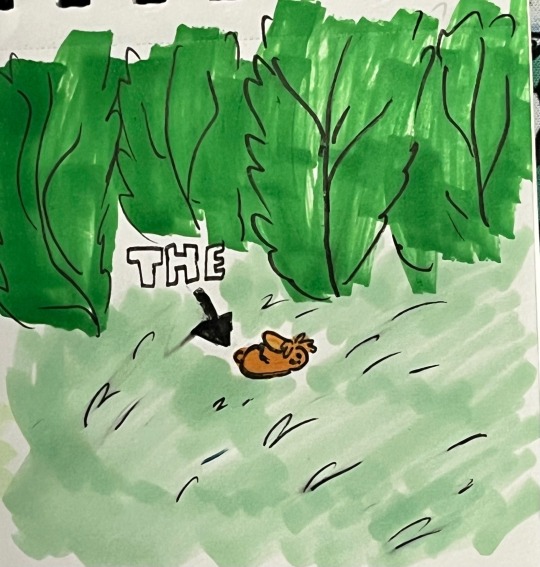
Bonus:
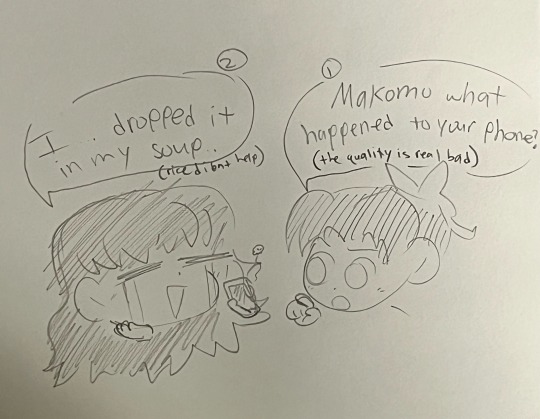
Shinobu: what happened to your phone? The quality is real bad.
Makomo: I..dropped it in my soup. Putting it in dry rice didn’t help..
References:




Link to ‘THE’
#kny#demon slayer#tomioka giyuu#octo’s art#sabito#sabigiyuu#SABIBUN AU#shinobu kocho#kny makomo#angry sabibun lmao#put a case over him like you would do to a bug in the floor#get trapped idiot#Makomo’s phone has soup quality lmao#in universe explanation for digital -> paper#I love doodling Makomo & Shinobu shenanigans#their little jellybean faces#was trying to hold off so my laptop could get fixed b4 u made this but we couldn’t get to Laptop Store y’know how it is#can’t even offer commissions for cash flow bc my ArtTop (art laptop) is fucked#but that’s okay bc drawing on paper is fun :D#I forgot how fun it is to color with alcohol markers ?? very delicious <3#ever put ur phone in dry rice after it got soaked? I had to do that twice in my life bc I have butter fingers#Makomo’s album
25 notes
·
View notes
Text
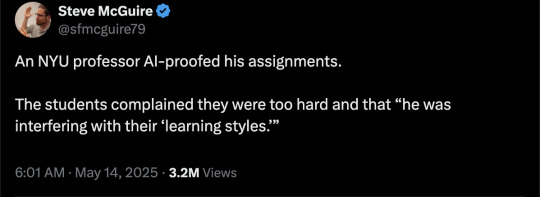


By: Clay Shirky
Published: Apr 29, 2025S
Since ChatGPT launched in late 2022, students have been among its most avid adopters. When the rapid growth in users stalled in the late spring of ’23, it briefly looked like the AI bubble might be popping, but growth resumed that September; the cause of the decline was simply summer break. Even as other kinds of organizations struggle to use a tool that can be strikingly powerful and surprisingly inept in turn, AI’s utility to students asked to produce 1,500 words on Hamlet or the Great Leap Forward was immediately obvious, and is the source of the current campaigns by OpenAI and others to offer student discounts, as a form of customer acquisition.
Every year, 15 million or so undergraduates in the United States produce papers and exams running to billions of words. While the output of any given course is student assignments — papers, exams, research projects, and so on — the product of that course is student experience. “Learning results from what the student does and thinks,” as the great educational theorist Herbert Simon once noted, “and only as a result of what the student does and thinks.” The assignment itself is a MacGuffin, with the shelf life of sour cream and an economic value that rounds to zero dollars. It is valuable only as a way to compel student effort and thought.
The utility of written assignments relies on two assumptions: The first is that to write about something, the student has to understand the subject and organize their thoughts. The second is that grading student writing amounts to assessing the effort and thought that went into it. At the end of 2022, the logic of this proposition — never ironclad — began to fall apart completely. The writing a student produces and the experience they have can now be decoupled as easily as typing a prompt, which means that grading student writing might now be unrelated to assessing what the student has learned to comprehend or express.
Generative AI can be useful for learning. These tools are good at creating explanations for difficult concepts, practice quizzes, study guides, and so on. Students can write a paper and ask for feedback on diction, or see what a rewrite at various reading levels looks like, or request a summary to check if their meaning is clear. Engaged uses have been visible since ChatGPT launched, side by side with the lazy ones. But the fact that AI might help students learn is no guarantee it will help them learn.
After observing that student action and thought is the only possible source of learning, Simon concluded, “The teacher can advance learning only by influencing the student to learn.” Faced with generative AI in our classrooms, the obvious response for us is to influence students to adopt the helpful uses of AI while persuading them to avoid the harmful ones. Our problem is that we don’t know how to do that.I
am an administrator at New York University, responsible for helping faculty adapt to digital tools. Since the arrival of generative AI, I have spent much of the last two years talking with professors and students to try to understand what is going on in their classrooms. In those conversations, faculty have been variously vexed, curious, angry, or excited about AI, but as last year was winding down, for the first time one of the frequently expressed emotions was sadness. This came from faculty who were, by their account, adopting the strategies my colleagues and I have recommended: emphasizing the connection between effort and learning, responding to AI-generated work by offering a second chance rather than simply grading down, and so on. Those faculty were telling us our recommended strategies were not working as well as we’d hoped, and they were saying it with real distress.
Earlier this semester, an NYU professor told me how he had AI-proofed his assignments, only to have the students complain that the work was too hard. When he told them those were standard assignments, just worded so current AI would fail to answer them, they said he was interfering with their “learning styles.” A student asked for an extension, on the grounds that ChatGPT was down the day the assignment was due. Another said, about work on a problem set, “You’re asking me to go from point A to point B, why wouldn’t I use a car to get there?” And another, when asked about their largely AI-written work, replied, “Everyone is doing it.” Those are stories from a 15-minute conversation with a single professor.
We are also hearing a growing sense of sadness from our students about AI use. One of my colleagues reports students being “deeply conflicted” about AI use, originally adopting it as an aid to studying but persisting with a mix of justification and unease. Some observations she’s collected:
“I’ve become lazier. AI makes reading easier, but it slowly causes my brain to lose the ability to think critically or understand every word.”
“I feel like I rely too much on AI, and it has taken creativity away from me.”
On using AI summaries: “Sometimes I don’t even understand what the text is trying to tell me. Sometimes it’s too much text in a short period of time, and sometimes I’m just not interested in the text.”
“Yeah, it’s helpful, but I’m scared that someday we’ll prefer to read only AI summaries rather than our own, and we’ll become very dependent on AI.”
Much of what’s driving student adoption is anxiety. In addition to the ordinary worries about academic performance, students feel time pressure from jobs, internships, or extracurriculars, and anxiety about GPA and transcripts for employers. It is difficult to say, “Here is a tool that can basically complete assignments for you, thus reducing anxiety and saving you 10 hours of work without eviscerating your GPA. By the way, don’t use it that way.” But for assignments to be meaningful, that sort of student self-restraint is critical.
Self-restraint is also, on present evidence, not universally distributed. Last November, a Reddit post appeared in r/nyu, under the heading “Can’t stop using Chat GPT on HW.” (The poster’s history is consistent with their being an NYU undergraduate as claimed.) The post read:
I literally can’t even go 10 seconds without using Chat when I am doing my assignments. I hate what I have become because I know I am learning NOTHING, but I am too far behind now to get by without using it. I need help, my motivation is gone. I am a senior and I am going to graduate with no retained knowledge from my major.
Given these and many similar observations in the last several months, I’ve realized many of us working on AI in the classroom have made a collective mistake, believing that lazy and engaged uses lie on a spectrum, and that moving our students toward engaged uses would also move them away from the lazy ones.
Faculty and students have been telling me that this is not true, or at least not true enough. Instead of a spectrum, uses of AI are independent options. A student can take an engaged approach to one assignment, a lazy approach on another, and a mix of engaged and lazy on a third. Good uses of AI do not automatically dissuade students from also adopting bad ones; an instructor can introduce AI for essay feedback or test prep without that stopping their student from also using it to write most of their assignments.
Our problem is that we have two problems. One is figuring out how to encourage our students to adopt creative and helpful uses of AI. The other is figuring out how to discourage them from adopting lazy and harmful uses. Those are both important, but the second one is harder.I
t is easy to explain to students that offloading an assignment to ChatGPT creates no more benefit for their intellect than moving a barbell with a forklift does for their strength. We have been alert to this issue since late 2022, and students have consistently reported understanding that some uses of AI are harmful. Yet forgoing easy shortcuts has proven to be as difficult as following a workout routine, and for the same reason: The human mind is incredibly adept at rationalizing pleasurable but unhelpful behavior.
Using these tools can certainly make it feel like you are learning. In her explanatory video “AI Can Do Your Homework. Now What?” the documentarian Joss Fong describes it this way:
Education researchers have this term “desirable difficulties,” which describes this kind of effortful participation that really works but also kind of hurts. And the risk with AI is that we might not preserve that effort, especially because we already tend to misinterpret a little bit of struggling as a signal that we’re not learning.
This preference for the feeling of fluency over desirable difficulties was identified long before generative AI. It’s why students regularly report they learn more from well-delivered lectures than from active learning, even though we know from many studies that the opposite is true. One recent paper was evocatively titled “Measuring Active Learning Versus the Feeling of Learning.” Another concludes that instructor fluency increases perceptions of learning without increasing actual learning.
This is a version of the debate we had when electronic calculators first became widely available in the 1970s. Though many people present calculator use as unproblematic, K-12 teachers still ban them when students are learning arithmetic. One study suggests that students use calculators as a way of circumventing the need to understand a mathematics problem (i.e., the same thing you and I use them for). In another experiment, when using a calculator programmed to “lie,” four in 10 students simply accepted the result that a woman born in 1945 was 114 in 1994. Johns Hopkins students with heavy calculator use in K-12 had worse math grades in college, and many claims about the positive effect of calculators take improved test scores as evidence, which is like concluding that someone can run faster if you give them a car. Calculators obviously have their uses, but we should not pretend that overreliance on them does not damage number sense, as everyone who has ever typed 7 x 8 into a calculator intuitively understands.
Studies of cognitive bias with AI use are starting to show similar patterns. A 2024 study with the blunt title “Generative AI Can Harm Learning” found that “access to GPT-4 significantly improves performance … However, we additionally find that when access is subsequently taken away, students actually perform worse than those who never had access.” Another found that students who have access to a large language model overestimate how much they have learned. A 2025 study from Carnegie Mellon University and Microsoft Research concludes that higher confidence in gen AI is associated with less critical thinking. As with calculators, there will be many tasks where automation is more important than user comprehension, but for student work, a tool that improves the output but degrades the experience is a bad tradeoff.I
n 1980 the philosopher John Searle, writing about AI debates at the time, proposed a thought experiment called “The Chinese Room.” Searle imagined an English speaker with no knowledge of the Chinese language sitting in a room with an elaborate set of instructions, in English, for looking up one set of Chinese characters and finding a second set associated with the first. When a piece of paper with words in Chinese written on it slides under the door, the room’s occupant looks it up, draws the corresponding characters on another piece of paper, and slides that back. Unbeknownst to the room’s occupant, Chinese speakers on the other side of the door are slipping questions into the room, and the pieces of paper that slide back out are answers in perfect Chinese. With this imaginary setup, Searle asked whether the room’s occupant actually knows how to read and write Chinese. His answer was an unequivocally no.
When Searle proposed that thought experiment, no working AI could approximate that behavior; the paper was written to highlight the theoretical difference between acting with intent versus merely following instructions. Now it has become just another use of actually existing artificial intelligence, one that can destroy a student’s education.
The recent case of William A., as he was known in court documents, illustrates the threat. William was a student in Tennessee’s Clarksville-Montgomery County School system who struggled to learn to read. (He would eventually be diagnosed with dyslexia.) As is required under the Individuals With Disabilities Education Act, William was given an individualized educational plan by the school system, designed to provide a “free appropriate public education” that takes a student’s disabilities into account. As William progressed through school, his educational plan was adjusted, allowing him additional time plus permission to use technology to complete his assignments. He graduated in 2024 with a 3.4 GPA and an inability to read. He could not even spell his own name.
To complete written assignments, as described in the court proceedings, “William would first dictate his topic into a document using speech-to-text software”:
He then would paste the written words into an AI software like ChatGPT. Next, the AI software would generate a paper on that topic, which William would paste back into his own document. Finally, William would run that paper through another software program like Grammarly, so that it reflected an appropriate writing style.
This process is recognizably a practical version of the Chinese Room for translating between speaking and writing. That is how a kid can get through high school with a B+ average and near-total illiteracy.
A local court found that the school system had violated the Individuals With Disabilities Education Act, and ordered it to provide William with hundreds of hours of compensatory tutoring. The county appealed, maintaining that since William could follow instructions to produce the requested output, he’d been given an acceptable substitute for knowing how to read and write. On February 3, an appellate judge handed down a decision affirming the original judgement: William’s schools failed him by concentrating on whether he had completed his assignments, rather than whether he’d learned from them.
Searle took it as axiomatic that the occupant of the Chinese Room could neither read nor write Chinese; following instructions did not substitute for comprehension. The appellate-court judge similarly ruled that William A. had not learned to read or write English: Cutting and pasting from ChatGPT did not substitute for literacy. And what I and many of my colleagues worry is that we are allowing our students to build custom Chinese Rooms for themselves, one assignment at a time.
[ Via: https://archive.today/OgKaY ]
==
These are the students who want taxpayers to pay for their student debt.
#Steve McGuire#higher education#artificial intelligence#AI#academic standards#Chinese Room#literacy#corruption of education#NYU#New York University#religion is a mental illness
14 notes
·
View notes
Text
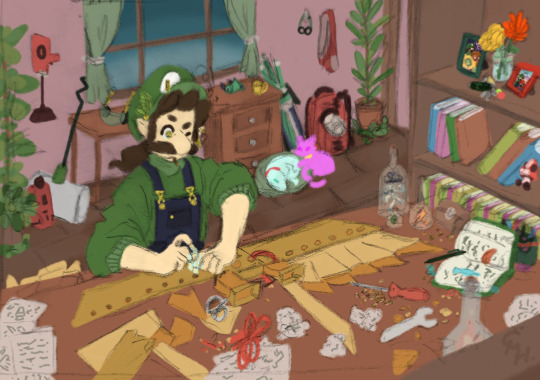
Old Luigi headcanon sketch that ill probably never finish :P
Original version i also never finished:

Also bonus Weegee

Explanations and closeups under cut!


This was sketched quite a while ago- and i intended to finish it with watercolours, but got bored.
So! Headcanons!
Luigi absolutely has adopted Polterkitty, (i dont think the game came out when i first sketched it, hense the lack of kitty!).
Luigi gets to keep thunder hand, as a treat, from the rpg.
Luigi also gets to keep his knowledge of mechanics from the paper games! He learn it before the events of spm, but thats where the ideas from. Hes verrry good at makiing machines (wings here- jusr becausw i like wings) but also the karts anddd umm probably some ghosty stuff with E.Gadd.
He kept Peasleys rose! Also Daisy gave him a flower too, so it wouldnt get lonely!
His room (study?? lab??? idk) looks messy, but Luigi knows *exactly* where everything is!
Luigi still sometimes grows leaves from his hair, primarily when anxious/excited.
Long hair and lighning earing... umm because im projecting, idk, i like it.
When ghost hunting, he often brings a respirator with him, particularly after the events of the hotel. Who knows when you might be breathing in asbestos or lead paint.
Completwly forgot about it in the digital colour- but he absolutely has hairy arms, no doubt about it.
Daisy x Luigi x Peasly, 100%.
Uhmmm... thats all i can think of off the top of my head.
PLEASE absoloutely ask me about anything if you want!
I think this was drawn arount the same time i started doodling a danganronpa au for the mario universe lmao. Shock horror Luigis the main character after a V3 senario.
#luigi nintendo#luigi x daisy#mario luigi#luigi mario#luigi#mario and luigi#luigi fanart#super mario bros#mario#mario bros#super mario#mario fanart#mr. l spm#mr l#mr l spm#paper mario#prince peasley#princess daisy#ramblings#nintendo#luaisy#luisley#luaisley#luigi x peasley#daisy x luigi#peasley x daisy#daisy x luigi x peasley#nintendo fanart
232 notes
·
View notes
Text
Study tips I wish I knew and followed sooner
15/8/2024
Hello everyone! I haven’t posed for a while because I was preparing this post. I’m so excited to share it!!!
Here I collected everything I was able to think about study tips. Obviously these are things that work for me so it’s absolutely okay if different things work for you, maybe share them in the comments so we can help and inspire each other🌸
I’ll maybe update the list as I learn more tips, or if you prefer I can collect new tips in a part two or give each tip a post, again let me now in the comments what you’d prefer💕


Less is more when underlining. Do use highlighter for key words, than circle words of secondary importance and underline something else. Absolutely do not underline/highlight/circle everything you’ll study, just those words that will help you remember the rest of that paragraph. It can help to use different colours but only when there are lists or categories because it helps you remember things as distinguished from one another. But I wouldn’t go crazy with colours in other situations
Take notes during lectures just to follow the explanation. Unless the subject is really easy and it’s fast to summarise it (which is usually the case in high school but not really in university), do NOT turn those notes into the thing you’ll study from or you’ll end up summarising the whole book and rewriting your notes to make them more pleasant and understandable. Just let yourself be messy if needed and use them to pay attention during class and to write things you didn’t understand or connections you want to explicitly see on paper. Paying attention in class really does pay off because you’ve already been exposed to the material before you actually study it
Start as early as possible, do not procrastinate until it’s gonna be really hard to prepare the exam. The pain of studying is better than the pain of regret in my opinion. Plus, you’ll be at peace and relaxed during exam season too when everyone else will be panicking because you won’t feel behind in your work
Get ready to study. Make yourself pretty. You can have everything, if you’re dressed for it. You don’t need to be uncomfortable with heels or anything like that, but wear something that makes you feel confident and determined
Moving your body before studying or during a break can help you be more present and remove brain fog. A simple walk outside really does the trick for me, it doesn’t need to be anything intense
Do not set an amount of pages to study per day as a goal at first. The first days just study for a chosen amount of hours and see how many pages you get to do a day of that particularly subject. Than you’ll be able to choose a realistic daily goal of pages to study. That’s because not every subject is the same and maybe you’d be setting unrealistic daily goals that will just demotivate you. This is why it’s important to start early: you get to find your rhythm for studying that subject and if it’s just 15 pages a day you’ll be able to do so without stressing
Give yourself a week or two depending on you and the exam of just revising before an exam. It’s important so that if you have days where you can’t function because of anxiety or if you need to clarify things you can do that without stressing
If the exam requires exercising, start practicing as soon as possible
If you only have a multiple choice kind of exam, memorise through quizzing yourself and exercises if needed
If the exam is (also) oral, you should (also) practice talking from the start by studying out loud
Sit in front of the class during lectures to pay attention better
Paper>digital because digital screens cause bad eyesight, digital things can get you distracted and because as you proceed on paper you’ll turn pages and you’ll get the feeling of progressing while seeing yourself going further in the book
Do not compare. Not everyone has the same strengths nor experience to get the same performance. But with discipline you can still get the same results, or even better
Study with a friend. You don’t neeed to study out loud together, the company is enough motivation because you feel accountable for one another and that stimulates you to do better. Plus, breaks are much more fulfilling and actually resting because you talk to another human being instead of going on your phone
Removing distractions means out of sight out of mind. Do not just turn off your phone and let it on the desk. Move it to another room and leave it there
Discipline is like a muscle. Resist the urge to do something else (checking your phone, watching Netflix, going to eat something, …). Acknowledge the urge and just stop yourself from satisfying it. If you can’t concentrate either, that’s okay. Just sit still without doing anything until the urge passes, then you can go back to studying with more concentration
Kill the fear whilst it’s small. Don’t procrastinate, instead face your challenges as soon as you can. The only way out is through
Talk to someone if you need help. If you need someone to check in on you, ask your roommate or relatives. If you didn’t understand something, ask the professor or your classmates. If you need emotional support, talk to the people close to you. It really does help
Go to the exam. Even if everything tells you that you’ll fail. Because you never know if you get lucky and only get asked the things you know. It happened to me quite a few times. The worst thing that can happen is that you have to do the exam again, the best is that you passed the exam. You never lose
Positive attitude and responsibility are key. Find the positive thing in every situation and realise that you have a huge responsibility in preparing for exams. You can’t control everything, but you can control the work you put into the preparation and that’s amazing because nobody can take that from you
There’s not a right time for anything. There’s just time and what you do with it. If it’s 5:17 pm you don’t need to wait until 5:30 pm to start studying. Just count to three and start. Do not look for the best time to study on the internet. Some people will tell you it’s 6 am, others will tell you something different. Listen to your body and pay attention to your mind. When are you the most concentrated? Than handle the day according to that. When you are the most active and concentrated you should study new material. When you are still energised but less focused, you should revise previous work and/or practice it
Sport, friends, family, hobbies and sleep are not a plus but a must. They have been a plus for me for so many years and I’ve been burnt out for almost a year. You need to take that hour or half hour to workout, preferably outside so you get that vitamin D. You need to see friends and family to avoid isolation. You need hobbies to feel rewarded for your hard work. You need to sleep because during sleep you strengthen neuronal patterns about the things you’ve studied, and sleeping helps you lower cortisol which is the stress hormone and keeping high levels of it is really bad and counterproductive. You need to balance everything because you gotta avoid at all costs chronic stress


Fear of failure is such a useless thing. It freezes you and makes you feel like the world is gonna explode if you fail. That’s bullshit of course. You are so much more than what you fail in, especially if you put in the work anyway. Don’t worry about how many times you fall, because the real difference is made by how many times you get up and try again. Fail, then fail better. Until you get it. Who cares? And even if someone does care, it’s their problem. As long as you are trying, you’re doing progress because remember that little progress is still progress. To worry less about failing, do the things you’re scared to fail at. If you fail, you’ll realise nothing bad really happens. And if you succeed, you’ll surprise yourself. Doubt kills way more opportunities than failure ever will, remember that
Be careful who you surround yourself with. If you are already really well organised and following a balanced lifestyle, then stay with whoever you like. But if you’re working on your lifestyle and don’t feel really productive nor satisfied with it yet, surround yourself with people who do have the lifestyle you’re looking for. That’s because when you’re still working on it you’re more likely to pick up habits from those around you
Be honest with yourself. Was the professor really a dick or did you not study that topic? Do you really need to rest are do you just want to avoid the work? Will you be able to do the work you wanted to if you go out right now? Telling yourself excuses makes you accumulate feelings of rage and subconscious disappointment and you enter the victim mentality instead of taking accountability and realising you can do a lot to change a situation. If you tell yourself excuses you’ll end up not trusting yourself and that’s so hard to fix
Often what people say about a professor is completely subjective, usually because they’ve had a bad experience with her/him and therefore want (usually subconsciously) to scare other students by sharing it. So you never really know if they are lying so that you have a bad experience with that teacher too, or maybe they deserved that strict treatments because they were rude and unprepared, … You really never know until you experience it first hand. Do ask many students and go attend to other people’s exam if possible so that you get an idea of who the professor is and how he structures the exam, make sure to listen to more opinions and never take them for granted. Know that everything might be biased
Take advices, but remember that many people want to see you do good, but never better than them. This doesn’t apply for everyone of course, but to many people yes
Pomodoro technique or deep work? Who fucking knows honestly lmao. Not everything will have the same rhythm and difficulty. For some topics or subjects you’ll have a headache after one hour trying to understand two pages. For others you’ll study without stopping for four hours because everything will seem to just be clear to you and to be sticking to your brain. Don’t follow a rule, just start and have a break when you’re struggling to fit in other informations
What you eat matters. Light meals to avoid feeling sleepy right afterwards help you study right after eating. Water keeps your brain in shape. Proteins keep you full and carbs keep you going. Sugar is tricky because it gives you energy right away but after little time you’ll need more, leading you to eating too much sugar and feeling foggy. Prefer healthy carbs instead of sugar (do eat some sugary treats if you want of course lol) like rice to have a more sustained energy release and mental clarity. These are the things that work for me anyway, you can experiment and see if you work better when eating many small meals or fewer big meals. Everyone is different and I’m not a nutritionist so listen to your body and try to be healthy
Celebrate small victories
Realistic goals please. Wanting to study 100 pages everyday is usually pretty unrealistic in a healthy and even in an unhealthy lifestyle. Not achieving your goals makes you feel like you can’t trust nor rely on yourself and that demotivates you
To focus try to think about the material. Read a sentence and tell yourself what it’s explaining you. Associate it with other things you’ve studied or experienced. Create little stories into your mind to remember a series of events. Anagrams for lists of names. Highlight, circle and underline as explained in one of the first points. Even give titles to paragraphs if you need to. Do this things with your own words and if you need to write them, do it right next to the paragraph. If you do these things you can’t think about something else because these require effort and attention. This a called active studying because you’re not passively reading and highlighting or repeating word for word without understanding but you’re really absorbing what you’re studying
Revise things constantly. Not a week later, but the next day. And if the next day you still don’t feel like you’ve memorised it, repeat it again the following day. If you remember it, repeat it 3 or 5 or 7 days later based on how much you retain things and how much you feel like you’ve memorised it. And after you’ve reached one week, keep repeating based on your needs. This is absolutely a game changer otherwise one or two weeks before the exam when you’ll want to revise everything again, you’ll realise you’ll have to study again a lot of things because you haven’t revised then. Such a waste! This is called spaced repetition, but instead of telling you a specific technique, I believe you need to listen to yourself and realise how much you’ve retained something to understand when to revise it again. Not every topic is the same and not everything you’ve memorised is relevant to you, so some things require more repetition than others and it’s up to you to see when it’s more for. But be honest with yourself, don’t tell yourself you know something just because you don’t want to revise. Reading again something is not revising it because just because it will feel familiar, doesn’t mean you’re able to talk about it completely recalling from memory. It’s important for you to repeat from memory, even if you struggle and feel like you don’t remember. Give yourself more credit and try to remember for at least 10 seconds before peeking on the book
Have something you enjoy while studying. It can be music (only music that does NOT have lyrics like lofi music or rain), a cup of tea, a candle, …
Switch up the location if you can’t focus
You don’t need a thousand pens, notebooks and colours to be productive and organised, but I believe it’s not a bad idea to have a different notebook for each subject where you take notes and write diagrams or whatever you need to better comprehend that subject


#med studyblr#study aesthetic#study blog#study inspiration#study motivation#study notes#studyblr#studying#studyspo#medicine#med school#med student#study tips#study tumblr#study techniques#student#study together
32 notes
·
View notes
Text
I hate to be the bearer of frustrating news, but in case some of you who frequent Founders Online (like I do) and have noticed an extreme spike of 503 “Service Temporarily Unavailable” errors, making access to the site impossible for periods of time, the team posted the explanation below:

Founders Online performance issues
19 May 2025: Founders Online is experiencing periodic degraded performance owing to extreme spikes in traffic caused by excessive website crawling, associated with content scooping from AI platforms and other indexers. We are working on a viable fix within the constraints of our server resources.
This is very unfortunate and very disgusting. I’m glad that they are trying to fix the issue, but it breaks my heart that they even have to put in the effort. From personal experience working as a student technician in my university’s Preservation Department, where my primary task is to digitize all sorts of old materials—books, newspapers, photographs, etc, and collaborate on how those items should be handled and scanned so that their digital copies can be presented and made accessible in the right ways, it takes A LOT of work just to digitize one item. Almost all of the documents you see on Founders Online are digital copies of the book pages from where these transcriptions originated—series’ of the founders papers that were printed in the last 70-80 years by university presses. Books that, when Founders was launched 15 years ago, were all between a few years and many decades old, and difficult for the general public to access. Of course, I don’t know the Founders team’s exact process for making the archive when they first started, nor do I claim to be the preservation expert by any stretch of the imagination, but I have a big hunch that it took many hundreds of hours, and likely continues to do so for the remaining volumes they intend to add to the site, to make Founders Online as it appears and maintain its usually fast performance.
AI in general frustrates me, but to see that this extremely valuable archive has now gotten caught in the scooping net makes me equally sad and angry. If you want to gather documents from the site, but will later be offline, you have the ability through the site to download PDF files of individual documents and print them. Most of the material is also in the public domain as well (not all, however—any annotations to a document are copyright of the institution which originally published those physical volumes I mentioned). AI scooping this archive for information to feed to language learning models is a waste of time, energy, and money, and is a violation of copyright law. At the risk of causing performance issues and affecting the servers that make Founders possible, this activity is potentially detrimental to historic preservation and access to historical knowledge. Those hundreds of hours the teams behind the site have worked also come into play: this site is their baby, their hard work, and it’s being stolen. And as a result, everyone’s ability to easily use the site without issue is being affected.
I am extremely fortunate to be in a position where I have been able to acquire a personal backup system for what I primarily use Founders for (my volumes of The Papers of Alexander Hamilton), and more so in that through my university, I have access to the rest of the physical series that make up the archive. So this current issue with the site being slow on performance and frequently down does not inconvenience me much. But this is a privilege. Founders Online was created to get around that privilege and allow for everyone (with an Internet connection) to access these important historical documents. I cannot hammer down to you just how important and valuable that is. Founders Online is an invaluable resource that deserves to be maintained and protected. I’m thankful that the team behind it are working diligently to do just that, but they should never have had to combat AI stealing their hard work and affecting the usability of the site in the first place.
#okay I’ll get off my soap box now#if anybody wants to look at an AHam document from 1793 or earlier I’d be happy to flip through volumes for you for the time being#just to put the offer out there#important#founders online#founders archives#amrev#founders era#historical documents#historical resources#historical research#important information#not writing#amrev fandom#alexander hamilton#george washington#thomas jefferson#james madison#john jay#john adams#benjamin franklin#founding fathers#18th century history#18th century correspondence
12 notes
·
View notes
Text



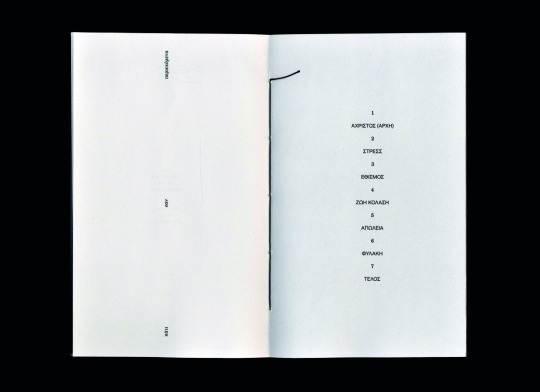
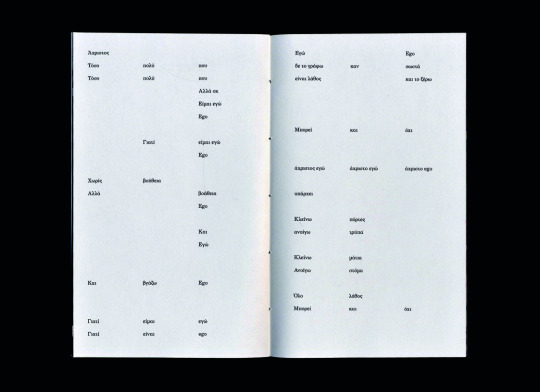
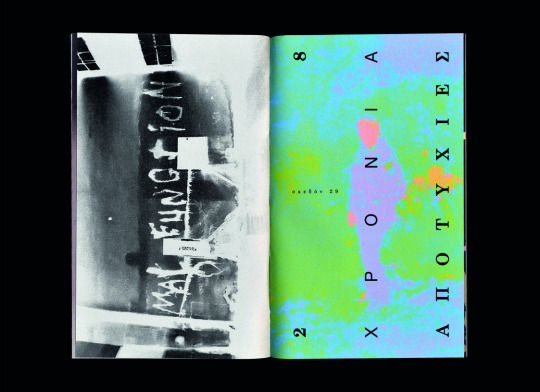






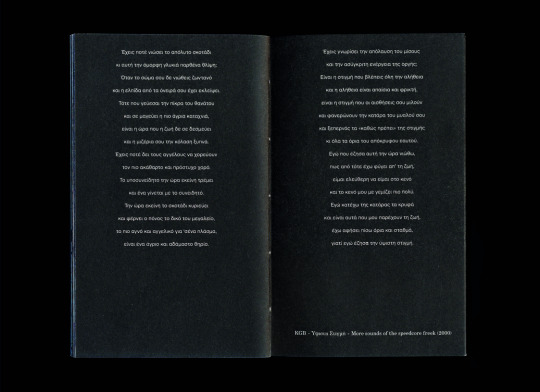


Spreads and photography of my book "EGOΕΓΩ - A Concrete Diary," designed as part of my Bachelor studies.
Some words on that:
The work EGOΕΓΩ - A Concrete Diary is the product of personal concerns and explorations. The purpose of this project was my need to record, as freely as possible, the things that have been on my mind in recent years, and to compose them into a cohesive work that, in its final stage, would be presented to a wider audience. In this project, I play a dual role: that of the designer and that of the client. The goal is to explore design based on a specific concept, and to develop my time management and decision-making skills. In the second phase, as some aspects of the project were the result of collaboration, I had the opportunity to further develop my organizational and communication skills—important abilities for my professional career. Lastly, the project highlights the importance of collaboration and the DIY (do it yourself) philosophy.
This idea stems from my personal involvement in various fields of applied arts, my love for collecting printed material, and my obsession with photographing everything that happens around me. The methodology behind the work combines photography, illustration, and typography. I aimed to explore the use of different materials in order to experiment with new textures, and to test the limits of both my creativity and the methods I chose. The creative thinking behind the project revolves around the individual as both a unit and a member of society. Through storytelling, I attempt to express internal dilemmas, concerns, insecurities, fears, and emotions of all kinds that shape who we are. There are references to memories and grievances—things that lead us on an endless journey of questioning what takes precedence: our self or our ego? These questions are based on real thoughts and situations, either my own or those of people close to me.
The approach to the message I seek to convey takes shape through the narration of a familiar circumstance, framed by a plethora of symbols. The circumstance I refer to is the simulation of a "burial," and the structure of the presentation of the work at the university is based on this practice. I chose this parallel because it is an event that concerns all individuals. It is an honest moment of expression for the participants, and despite the lack of justice that sometimes weighs it down, it remains the most just event in our lives. In the case of EGOΕΓΩ, the individual is represented by the book. Anyone who approaches it—whether out of curiosity or natural attraction—and opens its pages, is confronted with its content. Images and texts spill over the edges of the pages, like repressed thoughts. The book closes, perhaps it will open again, but to do so requires hands to grasp it and a will to understand. With each touch, it is given new life. With the end of one era, a new one is born. New bonds are created: solidarity, understanding, and empathy. Perhaps even new friendships. In such an intense moment, the feelings that are born merge and bring to the surface something new—stronger and ready to move forward. In other words, just as one cycle closes and through it we gain resources for the next phase, this presentation is both an end and a beginning, a transition to something else.
The explanation of the name EGOΕΓΩ clearly touches on the "battle" between our self and our "ego," setting the stage for what is to follow. The logo is fully typographic, highlighting the two words (EGO and ΕΓΩ). Schematically, it represents the form of a person—very abstract. The purpose of this decision is not merely to make the design interesting, but to capture the two aspects of ourselves: "EGO" and "ΕΓΩ".
Project supervisor: Anna Altouva
Published by Brick Home Studio, in Athens, June 2023
Edition of 34
11 X 18 cm, 92 pages
Digital offset printing: Fotolio S.A.
Handmade coptic binding: Brick Home Studio
Cover: 1190gsm total black bookbinding paper / Body: Munken Print white 115 gsm
Photography and scans: Christos Kotsinis
Concrete case: Sergios Fotiadis (We design)
#2022#2023#graphic design#visual communication#concrete poetry#editorial design#art book#a concrete diary
7 notes
·
View notes
Text
Guide to Apostille-Attestation for Digitally Issued Documents in India
Summary: Apostille-attestation for Digitally Issued Documents in India
Process Overview: Verify acceptance, obtain a digitally signed document, print, certify, and apostille through the Ministry of External Affairs (MEA).
Key Requirements:
Digitally signed by a recognised certifying authority.
MEA-accepted formats (typically PDF with embedded signatures)
Submission through a reliable service provider like PEC attestation
Considerations:
Global acceptance variability
Maintaining document security and integrity
Adhering to evolving MEA guidelines
Resources:
MEA Official Website for guidelines
Information Technology Act, 2000 for digital signature regulations
Table of Contents
Introduction to Apostille and Attestation
Understanding Digitally Issued Documents
Apostille-Attestation Process for Digitally Issued Documents in India
Detailed Explanations and Requirements
Challenges and Considerations
Frequently Asked Questions (FAQs)
Conclusion
1. Introduction to Apostille and Attestation
• Apostille: Apostille Is an international certification program under the Hague Convention (1961), which simplifies the authentication process for documents to be used overseas.
• Attestation: Attestation is a verification of the authenticity of a document by an authorised authority, often required for international recognition of a document.
2. Understanding Digitally Issued Documents
Examples:
E-degree certificates from universities
Digital mark sheets
E-born certificates
Electronically generated invoices for export purposes
Digital ID proofs (if accepted by the destination country)
Characteristics:
Issued in electronic format
Typically bear digital signatures
May have unique identifiers or QR codes for verification
3. Apostille-Attestation Process for Digitally Issued Documents in India
Step 1: Verify Acceptance
• Destination Country:
Confirm acceptance of digitally issued documents
Understand specific requirements (if any)
• Indian Issuing Authority:
Verify capability to issue documents in an apostille-acceptable format
Confirm digital signature validity
Step 2: Obtain a Digitally Signed Document
• Request from Issuing Authority:
Ensure the document is generated in a format suitable for apostille
Verify the digital signature is from a trusted service provider (under the Information Technology Act, 2000)
• Digital Signature Verification:
Check for a valid digital certificate
Ensure the certificate is not revoked
Step 3: Print the Document (if required)
• MEA Requirements:
Sometimes, a printed version is necessary for the apostille process
Ensure the print clearly displays the digital signature and all details
• Printing Guidelines:
Use high-quality paper
Maintain document integrity (no alterations)
Step 4: Attestation from the Issuing Authority (if applicable)
• Educational Documents:
University/Institution Verification (e.g., Registrar's verification)
• Non-Educational Documents:
Municipal/State Verification (for birth certificates, etc.)
Step 5: Apostille from the Ministry of External Affairs (MEA)
• Submission:
Through MEA Authorized Service Centers (recommended) or directly to the MEA
Include all required documents (digitally issued document/print, attestation if applicable)
• MEA Verification:
Confirmation of the digital signature and document authenticity
Possible direct verification with the issuing authority
• Apostille Stamp:
Affixed upon successful verification
4. Detailed Explanations and Requirements
• Digital Signature Requirements:
Must be from a Certifying Authority (CA) recognized under the Information Technology Act, 2000
Examples of recognized CAs: NIC, eMudhra, etc.
• Document Formats Accepted for Apostille:
Typically PDF with embedded digital signatures
Other formats may be accepted; check with the MEA
• Processing Time and Fees:
Each application will have a different processing time and timeline depending on many factors, including the type of document and the authority.
Please contact PEC attestation, so we can advise you on the exact fees and requirements for your specific needs
5. Challenges and Considerations
• Acceptance Variability:
Global acceptance of digitally issued documents varies
Always confirm with the destination country
• Security and Tamper Evidence:
Ensure the document's digital security features are maintained
Any tampering should be evident
• Evolving MEA Guidelines:
Regularly check the MEA's official website for updates
Be prepared for changes in the process or requirements
6. Frequently Asked Questions (FAQs)
Q: Are all digitally issued documents eligible for apostille?
A: No, eligibility depends on the destination country's acceptance and the document's compliance with MEA requirements.
Q: Can I submit digitally issued documents online for apostille?
A: Currently, the MEA requires physical submission for apostille. Check for future updates.
Q: How do I verify the authenticity of a digitally signed document?
A: Use the issuing authority's verification portal or check the digital signature's validity through the Certifying Authority's website.
7. Conclusion
It is extremely important to plan meticulously for the apostille attestation of digitally signed documents in India and follow the MEA's guidelines in accordance with the apostille attestation process.
Using this comprehensive guide, individuals will be able to navigate the process meticulously and ensure that their digitally issued documents will be recognized internationally once they have been issued.
0 notes
Text
Card Terminals vs Mobile Payments: What to Choose?
As the world rapidly shifts toward digital transactions, businesses and consumers alike are re-evaluating how they handle payments. Two prominent methods stand out in today's evolving payment landscape: card terminals and mobile payments. While both are convenient and widely accepted, they cater to different needs and preferences. Whether you're a business owner deciding which option to adopt or a consumer curious about how each works, this blog will help you understand the differences and guide you in making an informed choice.
What Are Card Terminals?
Card terminals, card machine often called point-of-sale (POS) machines, are electronic devices used to process credit and debit card transactions. These machines typically accept chip-and-PIN cards, magnetic stripe cards, and contactless cards. Some newer models also accept mobile wallet payments.
Card terminals are commonly seen in retail stores, restaurants, service counters, and more. They offer a reliable and familiar way for customers to pay and for merchants to collect payment efficiently.
Advantages of Card Terminals
Widely Accepted Most consumers carry a debit or credit card, making card terminals a universal payment solution.
Fast and Reliable With stable network connections (Wi-Fi, Ethernet, or SIM-based), transactions are usually quick and consistent.
Familiarity Customers are comfortable using card terminals. They trust the process, and little explanation is needed.
Security Features Many card terminals come with end-to-end encryption and secure PIN entry, making them a safe choice for transactions.
Paper Receipts Many businesses still prefer providing printed receipts for returns, exchanges, or record-keeping.
Disadvantages of Card Terminals
Initial Cost and Maintenance Businesses often need to purchase or rent the device and pay for upkeep or software updates.
Physical Space Requirement Card terminals require counter space and sometimes additional hardware like receipt printers.
Limited Mobility Unless they are portable models, most card terminals are fixed to a specific location.
What Are Mobile Payments?
Mobile payments refer to transactions made through smartphones, smartwatches, or tablets using digital wallets or apps. These payments are contactless and processed through technologies like NFC (Near Field Communication), QR codes, or peer-to-peer (P2P) platforms.
Mobile payments have surged in popularity, especially among younger demographics and in urban areas, due to their speed and ease of use.
Advantages of Mobile Payments
Contactless and Hygienic Especially relevant in a post-pandemic world, mobile payments reduce physical contact, making them a cleaner alternative.
Convenience and Speed Users can complete transactions with just a tap or scan—no need to carry physical cards or cash.
Enhanced Features Mobile apps often provide features like transaction history, budget tracking, cashback offers, and loyalty rewards.
Mobility for Merchants With the right app and device, vendors can accept payments anywhere, making this ideal for mobile businesses and pop-up events.
Lower Equipment Costs Accepting mobile payments may not require dedicated hardware, especially for small businesses.
Disadvantages of Mobile Payments
Limited User Adoption Not everyone is comfortable using or has access to mobile payment technology, particularly older generations.
Battery and Connectivity Dependence Both the customer and the merchant need working devices and stable internet connections.
Security Concerns While mobile payments can be secure, users must take extra precautions with passwords, biometric locks, and app permissions.
Compatibility Issues Not all mobile payment apps are compatible with every type of phone or operating system.
Factors to Consider When Choosing Between Them
1. Customer Demographics
If your target audience consists mainly of tech-savvy individuals or younger customers, mobile payments may be more appropriate. On the other hand, if your clientele prefers traditional payment methods, card terminals are a safer bet.
2. Type of Business
For fixed-location businesses like retail stores or salons, a card terminal & contactless card machine for small business provides a stable and professional checkout experience. For mobile businesses such as food trucks, market vendors, or service professionals who travel, mobile payments offer unmatched flexibility.
3. Transaction Volume
Card terminals are designed to handle high volumes of transactions quickly and efficiently. If you deal with many customers daily, this option may be more suitable. Mobile payments can also manage high volumes but might not be as fast when network issues arise.
4. Cost and Budget
If you're a small business with tight capital, you might find mobile payment systems more affordable since they may not require expensive hardware. Card terminals, while reliable, often involve upfront and recurring costs.
5. Security and Compliance
Card terminals usually meet strict industry standards for data protection and compliance. Mobile payments can be just as secure, but only if both parties follow best practices such as using up-to-date apps, strong authentication methods, and secure networks.
The Hybrid Approach: Why Not Both?
In today’s dynamic marketplace, flexibility is key. Many businesses are choosing to offer both card terminal and mobile payment options. This hybrid approach ensures that no customer is turned away due to limited payment methods.
Offering multiple payment options also enhances customer satisfaction and builds trust, showing that your business is modern, adaptable, and customer-focused.
Final Thoughts
Card terminals and mobile payments both have their unique strengths. Choosing the right solution depends on your business type, customer preferences, and operational needs.
Card terminals are trusted, efficient, and well-suited for traditional retail settings.
Mobile payments offer flexibility, speed, and tech-forward appeal, especially for businesses on the go.
Ultimately, the best choice may not be one or the other—but both. Embracing multiple payment options ensures you're ready for today's diverse and digital-savvy consumer base.

0 notes
Text
Mastering Academia: The Indispensable Role of Sri Lankan Tuition Classes

In the vibrant educational landscape of Sri Lanka, a parallel system of learning has flourished, becoming an almost indispensable part of a student's academic journey: the tuition class. Far from being a mere supplement, these classes have evolved into dynamic hubs of focused learning, critical for navigating the competitive academic environment and achieving excellence. If you're a student, parent, or educator in Sri Lanka, understanding the profound impact and unique benefits of "Sri Lankan tuition classes" is key to unlocking academic success.
Why Sri Lankan Tuition Classes are More Than Just Extra Lessons
The concept of tuition in Sri Lanka extends beyond the global understanding of private tutoring. It's a deeply ingrained cultural phenomenon, driven by several key factors that make these classes highly effective and sought after.
Bridging Gaps and Reinforcing Core Concepts
School curricula in Sri Lanka are comprehensive, but individual learning paces vary. Tuition classes excel at identifying and addressing specific knowledge gaps that students might develop. In a smaller, more focused setting, tutors can dedicate more time to difficult concepts, ensuring a thorough understanding that might not always be possible in a larger classroom.
Mastering Exam Techniques and Strategies
The Sri Lankan examination system, particularly the G.C.E. Ordinary Level and Advanced Level examinations, demands not just knowledge but also strategic application. Tuition classes are masters at dissecting past papers, identifying common question patterns, and teaching effective time management and answering techniques. This exam-centric approach is a cornerstone of their success, equipping students with the tools to excel under pressure.
Personalized Attention and Accelerated Learning
While not strictly one-on-one, the smaller group sizes in many tuition classes allow for more personalized attention than a typical school classroom. Tutors can tailor their explanations to suit different learning styles, offer immediate feedback, and even push advanced students to explore topics in greater depth. This personalized touch can significantly accelerate a student's learning progress.
The Diverse World of Sri Lankan Tuition Classes: Finding Your Fit
The "Sri Lankan tuition class" ecosystem is incredibly diverse, catering to a wide range of subjects, levels, and learning preferences.
Subject-Specific Mastery: From Science to Arts
Whether it's the complexities of Advanced Level Physics, the intricacies of Sinhala literature, or the foundational principles of O/L Mathematics, there's a specialized tuition class for almost every subject. These classes are often led by tutors who are experts in their respective fields, providing in-depth insights and practical guidance.
Level-Based Groupings: O/L, A/L, and Beyond
Tuition classes are typically structured around the major examination levels:
G.C.E. Ordinary Level (O/L) Tuition: Focuses on consolidating foundational knowledge and preparing students for the crucial O/L examination.
G.C.E. Advanced Level (A/L) Tuition: Highly specialized, preparing students for the rigorous A/L examination, which is a gateway to university education. These classes often delve into complex theories and extensive problem-solving.
Primary and Scholarship Tuition: Even at younger ages, tuition classes exist to help students build strong foundations and prepare for competitive scholarship exams.
The Rise of Online Tuition: Convenience and Accessibility
In recent years, the landscape of Sri Lankan tuition has expanded to include a significant online presence. Online tuition classes offer:
Flexibility: Students can attend classes from anywhere, eliminating travel time.
Wider Reach: Access to a broader pool of highly sought-after tutors, regardless of geographical location.
Interactive Tools: Utilization of digital whiteboards, shared documents, and online quizzes to enhance the learning experience.
Choosing the Right Sri Lankan Tuition Class: A Strategic Decision
With so many options available, selecting the ideal "Sri Lankan tuition class" requires careful consideration.
Reputation and Track Record
Look for classes and tutors with a strong reputation for producing successful results. Word-of-mouth recommendations from other parents and students can be invaluable. Don't hesitate to inquire about past student achievements.
Tutor Expertise and Teaching Style
The effectiveness of a tuition class largely depends on the tutor. Seek out tutors who are not only knowledgeable but also possess excellent communication skills, patience, and an ability to make complex concepts understandable and engaging.
Class Size and Learning Environment
Consider the class size that best suits the student's learning style. Some students thrive in smaller, more intimate settings, while others might benefit from the dynamic of a slightly larger group. Ensure the learning environment is conducive to concentration and active participation.
Location and Logistics (for Physical Classes)
For traditional, in-person tuition, consider the convenience of the location, accessibility, and safety of the environment.
Cost and Value Proposition
While cost is a factor, focus on the value proposition. A slightly higher fee might be justified if the class offers exceptional quality, personalized attention, and a proven track record of success.
Beyond the Grades: The Holistic Benefits of Tuition
While academic achievement is a primary driver, "Sri Lankan tuition classes" often offer unquantifiable benefits that contribute to a student's overall development.
Building Confidence and Reducing Stress
Mastering challenging subjects in a supportive environment can significantly boost a student's confidence. The structured learning and ample practice provided by tuition classes can also alleviate exam-related stress and anxiety.
Developing Discipline and Time Management
Regular attendance and consistent effort required by tuition classes instill valuable discipline and time management skills that extend far beyond academics.
Fostering a Love for Learning
When a student grasps difficult concepts and experiences success, it can ignite a genuine love for learning. Many tutors go beyond the curriculum, sharing their passion for the subject and encouraging intellectual curiosity.
The Future of Education: Integrating Tuition and Mainstream Learning
The role of "Sri Lankan tuition classes" is undeniably integral to the nation's educational fabric. As the education system continues to evolve, the challenge and opportunity lie in fostering greater synergy between mainstream schooling and the supplementary learning provided by tuition centers. This collaboration has the potential to create a more robust, adaptive, and ultimately more successful learning experience for every Sri Lankan student.
0 notes
Text
Desklib: Your Smart Academic Companion for Smarter Learning
In today’s digital era, students and educators are no longer limited to traditional textbooks and handwritten notes. The rise of artificial intelligence has transformed how we learn, teach, and evaluate knowledge. At the forefront of this educational revolution is Desklib — an all-in-one academic platform powered by cutting-edge AI tools like AI Grader, AI Code Checker, AI Quiz, AI Answers, AI Paraphraser, Study Documents, AI Detector, and Plagiarism Checker.
Whether you're preparing for exams, writing research papers, coding assignments, or even creating interactive quizzes, Desklib offers a suite of intelligent tools that simplify your learning journey. Let’s dive into how each feature can empower you to study smarter, not harder.
📚 Why Desklib Stands Out in Today’s Academic Landscape
With so many online platforms promising academic success, what makes Desklib different? It’s not just another website—it’s your personal academic assistant. Designed with real users in mind, Desklib blends artificial intelligence with human-centric design, making it easy, intuitive, and effective for learners of all ages.
Let’s explore the powerful tools that make Desklib a must-have for students, teachers, and professionals alike.
✅ AI Grader – Instant Feedback That Helps You Improve
Grading can be time-consuming and subjective—especially when dealing with essays, short answers, or complex problem sets. Enter AI Grader, a smart grading system that evaluates written responses quickly and accurately.
This tool uses natural language processing to understand context, grammar, structure, and content quality. Whether you're a teacher managing a class of 50 or a student practicing essay writing, AI Grader provides:
Instant feedback
Detailed scoring
Suggestions for improvement
Consistent evaluation standards
It’s like having a virtual teaching assistant available 24/7.
💻 AI Code Checker – Debug Like a Pro
For programming students and developers, writing clean, functional code is essential. But even the best coders make mistakes. That’s where the AI Code Checker comes in.
This tool scans your code for syntax errors, logical flaws, and performance issues. It supports multiple languages like Python, Java, C++, and more. What makes it stand out?
Real-time error detection
Intelligent suggestions for optimization
Explanation of common bugs
Integration with popular IDEs
Whether you're working on a university project or prepping for a technical interview, the AI Code Checker ensures your code is clean, efficient, and ready to run.
🧠 AI Quiz – Turn Learning Into a Game
Learning should be fun—and with AI Quiz, it is. This interactive tool transforms your study material into engaging quizzes tailored to your understanding level.
How does it work?
Input your topic or upload a document
Choose quiz type: MCQs, fill-in-the-blanks, true/false
Get instant results with explanations
Perfect for revision, test prep, or classroom engagement, AI Quiz keeps learners motivated and helps reinforce key concepts through gamification.

Teachers can also use this feature to create dynamic assessments and monitor student progress in real-time.
❓ AI Answers – Your Personal Knowledge Assistant
Got a question? Ask AI Answers. Whether it's a tricky math problem, a historical event, or a scientific concept, this tool gives you quick, accurate, and reliable responses based on credible sources.
Unlike generic search engines, AI Answers doesn’t just give you links—it gives you clear, concise explanations. Ideal for:
Homework help
Quick fact-checking
Concept clarification
Research support
Think of it as your 24/7 academic tutor, always ready to assist.
🔄 AI Paraphraser – Reword Without Losing Meaning
Originality is crucial in academic writing. But sometimes, finding the right way to rephrase a sentence without changing its meaning can be tough. That’s where AI Paraphraser shines.
This advanced tool understands context, tone, and intent. It helps you:
Avoid plagiarism
Enhance clarity
Improve readability
Maintain original meaning
Whether you’re rewriting an essay, preparing a presentation, or summarizing research, the AI Paraphraser ensures your work stays authentic and impactful.
🗂️ Study Documents – Organize, Store & Share
Managing study materials can be chaotic. With Study Documents, you can store, categorize, and access all your files in one place. No more lost PDFs or cluttered folders.
Features include:
Cloud-based storage
Easy tagging and search
Collaborative sharing
Offline access
Ideal for group projects, research teams, or individual learners, Study Documents brings order to your academic life.
🔍 AI Detector – Spot AI-Written Content Fast
As AI-generated text becomes more prevalent, maintaining authenticity in academic work is more important than ever. The AI Detector analyzes text to determine if it was written by a human or generated by AI.
Why use it?
Ensure academic integrity
Detect AI-written essays
Maintain fairness in assessments
Promote genuine learning
Educators, institutions, and students can rely on this tool to uphold high standards of originality and critical thinking.
🚫 Plagiarism Checker – Protect Your Original Work
Plagiarism is a serious offense in academia. To ensure your work is truly yours, Desklib offers a powerful Plagiarism Checker that scans your documents against billions of web pages and academic databases.
Key benefits:
Comprehensive similarity reports
Source identification
Multiple file format support
Fast and accurate results
Use it before submitting assignments, publishing research, or presenting at conferences to maintain credibility and avoid unintentional copying.
💬 Real Stories from Real Users
Don’t just take our word for it. Hear from students and educators who’ve made Desklib part of their daily routine.
"The Plagiarism Checker helped me catch accidental duplication in my thesis. I submitted confidently knowing my work was original." – Priya, PhD Candidate
"I use AI Answers every day for quick homework help. It saves me so much time!" – Noah, High School Student
"AI Grader changed how I assess my students. It's fast, fair, and gives them valuable insights." – Mr. Johnson, University Professor
These stories reflect the real impact Desklib has on everyday learning.
📰 Stay Updated with Our Blog
At Desklib, we believe learning never stops. That’s why we regularly publish articles, guides, and expert tips on our blog. From mastering AI tools to improving study habits, there’s always something new to discover.
Check out our latest posts:
“How to Ace Your Coding Assignments Using AI”
“Top 5 Tips for Effective Exam Revision”
“Understanding AI Ethics in Education”
Stay ahead of the curve with expert insights and actionable advice.
🌐 Visit Desklib Today!
Ready to experience the future of learning? Explore everything Desklib has to offer at https://desklib.com/. Whether you're a student, educator, researcher, or professional, our AI-powered tools are designed to support your academic goals.
From AI Grader to Plagiarism Checker, Desklib empowers you to learn smarter, write better, and stay ahead of the competition.
🧩 Final Thoughts: Embrace AI for Better Learning
Artificial Intelligence is no longer a futuristic concept—it's here, and it's transforming education. Tools like AI Grader, AI Code Checker, AI Quiz, AI Answers, AI Paraphraser, Study Documents, AI Detector, and Plagiarism Checker are becoming essential components of modern learning.
By integrating these technologies into your study routine, you open doors to:
Improved efficiency
Deeper understanding
Enhanced creativity
Greater academic success
So why wait? Discover the power of AI with Desklib and unlock your full potential.
👉 Start your journey today at https://desklib.com/. Join thousands of students and educators who are already embracing smarter learning.
#AI Grader#AI Code Checker#AI Quiz#AI Answers#AI Paraphraser#Study Documents#AI Detector#Plagiarism Checker#Desklib
0 notes
Text
An Analysis of God Created the Sea and Painted it Blue so We'd Feel Good On It by Michelle Ray
View the book and its details here
View more of Michelle Ray's pieces here
Something that always interests me in media is exploration of the lines between truth, reality, and fiction. I was originally drawn to this book because of its title, but I knew I was going to choose it for this paper when I read the author’s quote, “The enclosed account is partially true. It is also partially fabricated. But I assure you that all of it has been vigorously documented in a most honest manner” in the book’s description on Herron’s digital collection site (Herron Library). In her book God Created the Sea and Painted it Blue so We’d Feel Good On It, Michelle Ray tells a story of ocean travel that is completely fictional and yet simultaneously the truth.
In an interview with Herringbone Bindery, Ray says that she grew up in the Pennsylvania Rust Belt near the Little Shenango river. She has a background in sailing and has built small sailboats herself. Before she began studying book arts, she received a Masters in Library and Informational Sciences from the University of Pittsburgh (Fletcher). Elements from these settings–rurality, nature, water, materiality, organization–are woven through all of her works.
While completing her undergraduate degree at the University of Pittsburgh, Ray was introduced to book arts by her sculpture professor, who noticed her interest in combining words, form, and kinetic elements. Ray studied book arts independently for years, including a year-long residency at Small Craft Advisory Press in 2012, before receiving a Book Arts MFA from University of Alabama in 2013 (Fletcher).
God Created the Sea and Painted it Blue so We’d Feel Good On It was created in 2013 as part of Ray’s MFA while she was at the Small Craft Advisory Press residency (Fletcher). It was made in an edition of 50. The book itself consists of 11 7x3.5” pamphlets, throughout which the story is compiled, as well as a crew manifest that is 21x14” when unfolded. The papers are handmade cotton/abaca, French Construction, and Neena Environment, and the images and text were printed using photopolymer plates. The pamphlets and manifest are stored in a slip-and-slot envelope, which is itself stored in a compartment of a custom-made box. The box is 7x5.5x4.25” and is made from linen and basswood. Alongside the compartment for the envelope is an open, fixed tunnel book. All of these details are from Ray’s page on Vamp & Tramp Booksellers’ website.
The box is what introduces viewers to the story. The imagery incorporated into its design are present throughout the book itself: a whale skeleton stretching around the outside of the box, a sailboat on the box’s inside cover, a compartment that holds a fixed tunnel book depicting another sailboat at sea. At the center of the tunnel book, on the furthest back layer, is a whale (as if hidden in the waves below the sailboat) and the quote “Some things you cannot explain because they are too simple,” which is attributed to Bernard Moitessier (Ray).
By introducing readers to her story with the above quote, Ray implies that the following story will speak for itself; there will be no explanation surrounding why she wrote the anecdotes that she did. The readers will simply have to trust what they feel in order to know the truth of what she says. This idea is continued on an inside flap of the envelope in which the book’s pamphlets are held: Ray writes, “I ask you, dear reader of this fine story, for complete suspension of disbelief–as no truer account of ocean going has ever been created” (Ray). This quote is the thesis statement of the entire book, which encapsulates the feeling of an ocean voyage. Despite the anecdotes that make up the book being fiction, the emotions and sensations that Ray portrays are the “truth” of what it is like to be on the sea.
The envelope in which the book’s pamphlets are held acts as the book’s colophon. Besides Ray’s ask to the readers, two other inside flaps contain information: one shows the method by which the pamphlets were folded and another provides more information about Moitessier, the man quoted in the tunnel book. Ray explains how he would have won the first around-the-world solo sailing competition had he not changed course in the final stretch and continued sailing instead. He tossed a note onto the deck of a passing ship, in which he explained, “I am happy at sea, and perhaps because I want to save my soul” (Ray). The colophon’s paragraph about Moitessier provides context for why Ray chose his quote for the tunnel book. By adding his reasoning for continuing at sea, Ray also begins a through-line that goes through the entire story: the ocean provides men with contentment and a desire for something greater than themselves.
Additionally, the bottom panel of the envelope upon which the papers of the book rest contains traditional colophon information–where the book was created, the materials used to create it, and what number of the edition this copy is (28/50). It also has a continued artist statement:
My dear reader, while residing in the Deep South, I undertook a most wondrous imaginary adventure. The journey began with time spent aboard a cardboard boat on the linoleum headwaters of my apartment and led to points unknown. It started as cathartic play, it became this object. The enclosed account is partially true. It is also partially fabricated. But I assure you that all of it has been vigorously documented in a most honest manner. (Ray)
Ray explains that the story told within God Created the Sea has originated from her imagination, but this does not mean it is an untrue account of the sea. Although the anecdotes she writes are both factual and fiction (it is never designated which are which, leaving the reader to decide for themself), the story she tells is a completely true (in the feelings it inspires) depiction of an ocean voyage.
God Created the Sea is told by an unnamed narrator (who is distinct from Ray). It recounts the experiences of a crew sailing aboard the ship The Ortolan. Although the same characters and events are referenced throughout the book, the anecdotes that make up the story are told non-linearly. The book also does not have a clear plotline; instead, Ray provides the readers with a collection of experiences that, when put together, give the sense of a tumultuous ocean voyage. Ray imitates the ever-changing, unpredictable state of the ocean in the non-linear way she organizes these anecdotes. She supplements them with footnotes that reference sailing legends, ocean phenomena, and other oceanic stories (such as Moby Dick), building a story that weaves fiction with reality in a way that creates an account that feels authentic. It is not the actual facts of the story that matter but rather how it feels to experience it.
Physically, the book is not a traditionally bound codex; instead, it is made up of 11 separate pamphlets and one crew manifest. The pamphlets are made from two pieces of paper accordion folded with four panels to a side. These pages were then sewn together at the valleys, which creates a diamond shape in the center when fully opened. All the pamphlets have text and/or imagery on both sides. Sometimes the anecdote on one side of the pamphlet is related to the anecdote or imagery on the other side of the pamphlet, but not always. Oftentimes, the leftmost and rightmost panels on a side have footnotes that provide more information or context about the anecdote(s) on the middle two panels.
Additionally, all of the pamphlets are oriented horizontally (if the paper is laid flat), but some are laid in the envelope so that the reader has to rotate or flip the paper in order to read the text or properly see the images. The footnotes on the outer panels are written parallel to the long side of the panel, requiring the viewer to orient the pamphlet vertically (if the paper is laid flat) in order to read the text. Assuming all the pamphlets were organized in the envelope as the author intended (as opposed to careless previous readers), the fact that the viewer has to rotate or flip the pamphlets so much in order to get the complete story implies the constantly shifting nature of the sea, which adds to Ray’s greater narrative about an ocean voyage.Overall, I greatly enjoyed God Created the Sea and Painted it Blue so We’d Feel Good On It. Ray explores the lines between a factual story and a story that is true in all aspects of the book: the non-linear narrative, the purposefully (I am assuming) disordered pages, the chosen references and images. When everything is brought together, it tells a story that may not have happened but is nonetheless a truthful account of travelling the sea.
#god created the sea and painted it blue so we'd feel good on it#michelle ray#sterling writes#in an ideal world i have written an essay comparing and contrasting this beautiful book with the things they carried by tim obrien#this is not an ideal world and instead i had to write an essay analyzing its technical details#which are also cool but like. ogh. Ogh. the Story the Themes the Parallels..........
1 note
·
View note
Text
Why Exnin is the Best eLearning Platform in Bangladesh?
In today’s fast-paced world, online education has become a necessity, and Exnin stands out as one of the best eLearning platforms in Bangladesh. Whether you’re a student, a professional, or someone looking to learn new skills, Exnin offers a wide range of courses designed to meet your needs. Here’s why Exnin is the top choice for learners across the country:
1. Focus on Academic Education
Exnin’s primary focus is on academic education, making it a trusted platform for students. It offers courses that align with the national curriculum, ensuring students get the right resources to excel in their studies. From school-level subjects to university-level topics, Exnin provides:
Detailed Lessons: In-depth explanations of complex topics.
Practice Materials: Quizzes, exercises, and past papers for exam preparation.
Exam Tips: Strategies to help students perform better in exams.
This focus on academics makes Exnin a reliable partner for students at every level.
2. Wide Range of Skill-Based Courses
Exnin doesn’t just stop at academics—it also offers skill-based courses to help learners build careers. Some of the most popular courses include:
Spoken English: Improve your communication skills and speak confidently.
Digital Marketing: Learn SEO, social media marketing, and freelancing.
Graphic Design: Master tools like Photoshop and Illustrator.
Web Design and App Development: Build websites and apps from scratch.
Freelancing: Start earning online with step-by-step guidance.
These courses are designed to be practical and hands-on, so learners can apply their skills in real-world scenarios.
3. Kids English: Learning Made Fun for Children
Exnin understands the importance of early education, which is why it offers a special Kids English course. This course is designed to make learning fun and engaging for children through:
Interactive Games: Kids learn through play, which keeps them interested.
Stories and Animations: Colorful and entertaining lessons help kids remember what they learn.
Age-Appropriate Content: Tailored for different age groups, ensuring effective learning.
This course helps children build a strong foundation in English, setting them up for future success.
4. Affordable and Accessible Learning
One of the biggest advantages of Exnin is its affordability. High-quality education is made accessible to everyone, regardless of their financial situation. Additionally, Exnin’s mobile app and website make learning convenient and flexible. You can:
Study anytime, anywhere.
Download lessons for offline access.
Track your progress and see how much you’ve learned.
This accessibility ensures that everyone can benefit from Exnin’s courses.
5. Expert Instructors and Practical Training
Exnin’s courses are designed and taught by industry experts with real-world experience. This ensures that learners receive up-to-date and relevant knowledge. For example:
In Digital Marketing, you’ll learn how to run ads, analyze data, and manage social media accounts.
In Graphic Design, you’ll work on real projects to build your portfolio.
In Freelancing, you’ll get step-by-step guidance on how to start and grow your freelancing career.
This practical approach helps learners gain skills that are directly applicable in the job market.
6. Comprehensive Support for Learners
Exnin is committed to providing a seamless learning experience. Learners can access support through:
Helpline: Call 01894523330 or 01894523331 for assistance.
Email Support: Reach out at [email protected].
Social Media: Follow Exnin on Facebook, YouTube, and Instagram for updates and tips.
Whether you have a question about a course or need technical support, Exnin’s team is always ready to help.
7. Freelancing Guidance: Start Earning Online
Freelancing is a popular career choice in Bangladesh, and Exnin’s Learn Freelancing course is perfect for beginners. The course covers:
How to create a freelancing profile.
How to find clients and manage projects.
Tips for pricing your services and building a portfolio.
With practical training and ongoing support, Exnin helps learners start their freelancing journey with confidence.
8. Why Exnin is Better Than Other Platforms
While there are other eLearning platforms like 10 Minute School, Shikho, and Mojaru, Exnin stands out because of its balanced approach. It combines academic education with skill-based training, making it a one-stop solution for all learning needs. Here’s how Exnin compares:
10 Minute School: Great for quick, bite-sized lessons but lacks depth in academic and technical courses.
Shikho: Focuses on competitive exams and interactive learning but doesn’t offer as many skill-based courses.
Mojaru: Best for creative skills like video editing and animation but doesn’t cater to academic students.
Exnin’s comprehensive course offerings and practical approach make it the best choice for learners in Bangladesh.
9. Success Stories: Real Results from Exnin Learners
Exnin has helped thousands of learners achieve their goals. Here are some success stories:
Students have improved their grades and aced exams with Exnin’s academic courses.
Professionals have switched careers or started freelancing after completing skill-based courses.
Kids have built a strong foundation in English, giving them a head start in their education.
These success stories are a testament to Exnin’s effectiveness as a learning platform.
10. How to Get Started with Exnin
Getting started with Exnin is easy:
Visit the Website: Go to www.exnin.com to explore courses.
Download the App: Search for Exnin in your app store and download it.
Enroll in a Course: Choose a course that suits your needs and start learning.
Access Support: Reach out to the Exnin team if you need help.
#academia#education#online education system bd#english medium online class#online classroom#online classes#online course
1 note
·
View note
Text
What Study Materials & Resources Do You Get with CUET Online Coaching?

Preparing for the Common University Entrance Test (CUET) requires the right study materials and resources to ensure success. With increasing competition, students are now turning to the best online coaching for CUET to get structured guidance, expert-curated content, and effective study resources.
But what exactly do you get when you enroll in CUET online coaching? Let’s explore the essential study materials and resources that help you ace the exam.
1) Comprehensive E-Books & Study Notes
One of the biggest advantages of CUET online coaching is access to digitally curated study materials that cover the entire syllabus. These include:
Detailed e-books with concept explanations, examples, and solved questions.
Concise study notes for quick revision and last-minute preparation.
Chapter-wise PDFs that help in step-by-step learning.
2) Live & Recorded Video Lectures
The best online coaching for CUET offers both live and recorded classes to provide a flexible learning experience. With these video lectures, you can:
Attend live interactive classes and get doubts cleared instantly.
Watch recorded sessions at your convenience, allowing for better revision.
Learn from expert faculty who explain concepts in a simple and effective way.
3) Topic-Wise & Full-Length Mock Tests
Mock tests play a crucial role in exam preparation. Enrolling in CUET online coaching gives you access to:
Topic-wise tests to strengthen individual subjects.
Full-length mock exams simulating the real CUET environment.
Detailed performance analysis to identify strengths and areas for improvement.
4) Practice Question Banks & Previous Year Papers
Practicing regularly is the key to success. Online coaching provides:
Thousands of MCQs based on the latest CUET syllabus.
Previous year question papers to understand exam trends.
Detailed solutions & explanations to improve conceptual clarity.
5) Personalized Mentorship & Doubt Solving
With best online coaching for CUET, you also get one-on-one mentorship to guide you throughout your preparation. This includes:
Dedicated doubt-solving sessions by expert faculty.
Personalized study plans based on your strengths and weaknesses.
24/7 doubt resolution support via chat, emails, or discussion forums.
Final Thoughts
The best online coaching for CUET provides high-quality study materials, expert guidance, and regular assessments to ensure your success. With structured learning, self-paced study options, and ample practice, online coaching can significantly improve your CUET preparation and boost your score.
0 notes
Text
10 of My Favourite Education Subreddits
Reddit is a valuable platform for accessing information, advice, and community interaction; however, it also presents challenges, such as varying content quality, misinformation, and the potential for negative social interactions. To make the most of Reddit, users need to approach content critically, verify the information, and engage with well-moderated subreddits that reflect their interests and values.
Below are some subreddits that I find particularly useful for keeping up with modern education trends:
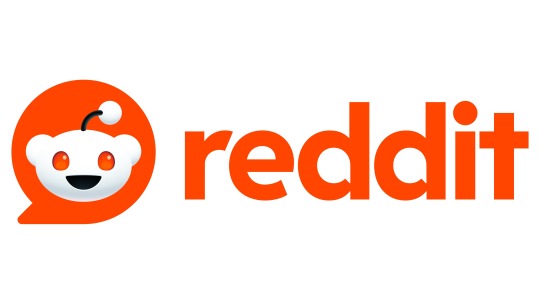
r/AskAcademia: This subreddit is an excellent resource for those navigating academic life, including students, researchers, and professors. It provides guidance on academic careers, research, publishing, and managing the challenges of higher education. The community is active, with many experienced academics offering insights and advice.
r/explainlikeimfive (ELI5): This subreddit is valuable for breaking down complex topics into simple, understandable explanations, suitable for those with little to no background knowledge. It covers a wide range of subjects, making it a great starting point for learning about unfamiliar concepts in an accessible way.
r/education: Focused on broader discussions about teaching, learning, and the education system, this subreddit is ideal for educators, students, and policymakers. It serves as a platform to exchange ideas, discuss challenges in education, and share resources, lesson plans, and teaching strategies.
r/learning: A supportive community for lifelong learners, this subreddit encourages discussions about self-education, study habits, and learning strategies. It’s a great place to find advice on learning new skills, staying motivated, and setting educational goals.
r/edtech: This subreddit focuses on the intersection of education and technology, making it a great resource for educators and students interested in the latest tools, apps, and platforms that enhance learning. It covers topics like digital classrooms, online learning platforms, and innovative teaching methods.
r/AcademicPsychology: For those interested in psychology, this subreddit provides discussions on research, academic papers, and the latest findings in the field. It is a useful resource for students and professionals who want to stay updated with current trends and debates in psychology.
r/educationpolicy: Focused on policy discussions, this subreddit delves into the regulations, reforms, and political aspects of education. It is an ideal space for those interested in understanding how educational policies shape the industry and impact schools, teachers, and students.
r/K12SysAdmin: While this subreddit is more technical, it offers valuable insights into the IT side of K-12 education, highlighting the challenges of managing school technology infrastructures. It is useful for understanding how technology integration affects educational institutions and learning environments.
r/Professors: This subreddit caters to the higher education sector, offering discussions on academic careers, teaching in universities, and the dynamics of the education system from the perspective of faculty members. It is a useful resource for those exploring the industry from an academic standpoint.
r/Libraries: For those interested in how libraries support education, this subreddit discusses the evolving role of libraries in communities and schools, including digital resource management, literacy programs, and the integration of technology. It is particularly useful for understanding how libraries contribute to educational outcomes and lifelong learning.
0 notes
Text
The Matrix Reloaded: Simulation Theory, Quantum Reality, and the Digital Demiurge
Red Pill Reality: NASA Scientist's Quest to Prove We Live in a Simulation
What if everything we know and experience as reality is nothing more than an extraordinarily advanced computer simulation? This tantalizing possibility, once the stuff of science fiction, has become the focus of serious scientific inquiry.
"I can't tell you what the Matrix is. You have to see it for yourself." - Morpheus
In 2017, former NASA physicist Thomas Campbell published a paper in The International Journal of Quantum Foundations outlining a series of experiments designed to detect whether our world is, in fact, a simulation (Campbell, 2017). Campbell's bold hypothesis has since spawned a non-profit organization, the Center for the Unification of Science and Consciousness (CUSAC), dedicated to exploring the boundaries between physical reality and the digital realm.
According to a 2021 survey, 40% of Americans believe it is at least somewhat likely that we live in a computer simulation (Chapman University Survey of American Fears, 2021).
A 2020 study found that 36% of computer scientists and physicists find the simulation hypothesis to be a "plausible explanation" for the nature of reality (Chalmers, 2020).
The Center for the Unification of Science and Consciousness (CUSAC) has received over $5 million from private donors and research grants to support Thomas Campbell's simulation hypothesis experiments (CUSAC, 2024).
The implications of Campbell's work are nothing short of revolutionary. If he and his team at the California State Polytechnic University (CalPoly) are successful in finding evidence that we exist within a computer-generated virtual reality, it would fundamentally challenge our most basic assumptions about the nature of existence.
Such a discovery could pave the way for a new understanding of physics, consciousness, and humanity's place in the cosmos.
Intriguingly, Campbell's simulation theory echoes the central premise of the iconic 1999 film "The Matrix" – that our perceived reality is nothing more than an elaborate illusion constructed by an advanced artificial intelligence. The film's famous scene where Morpheus offers Neo the choice between the blue pill of blissful ignorance and the red pill of harsh truth has become a cultural touchstone, a potent metaphor for the very dilemma facing Campbell and his fellow researchers.
In this exploration, we will delve into the implications of Campbell's work, examining how it intersects with quantum physics, philosophy, and pop culture. We'll use the rich mythos of "The Matrix" as a lens to understand these complex ideas, drawing parallels between the film's characters and concepts and the real-world theories that may reshape our understanding of existence.
From the streets of the simulated Matrix to the quantum realm, from ancient Gnostic texts to cutting-edge information theory, we'll traverse the landscape of human knowledge in search of answers. Along the way, we'll grapple with questions of free will, consciousness, and the very nature of reality itself.
As we embark on this journey, we invite you to suspend disbelief, question your assumptions, and consider the possibility that, like Neo, we might be on the verge of awakening to a reality far different from what we've always assumed.
Down the Rabbit Hole: The Matrix as a Lens for Understanding Reality
"What is real? How do you define 'real'? If you're talking about what you can feel, what you can smell, what you can taste and see, then 'real' is simply electrical signals interpreted by your brain." - Morpheus
The notion that our reality could be nothing more than a computer simulation is not a new one. The philosophical roots of this idea can be traced back centuries, from Plato's allegory of the cave to the writings of 17th-century philosopher René Descartes. However, it was the 1999 science-fiction film "The Matrix" that truly thrust this concept into the mainstream consciousness, offering a vivid depiction of a simulated world indistinguishable from our own.
The Matrix franchise has grossed over $1.6 billion worldwide, with the original 1999 film alone earning $463 million at the box office (Box Office Mojo, 2023).
A 2018 survey found that 65% of college students could correctly identify the "red pill" and "blue pill" symbolism from The Matrix when presented with the concept (Pew Research Center, 2018).
Scholarly articles analyzing the philosophical and metaphysical themes of The Matrix have been published in over 50 academic journals, including prominent titles like The Journal of the American Philosophical Association and Film and Philosophy (Google Scholar, 2023).
In "The Matrix," the protagonist Neo (played by Keanu Reeves) is a computer programmer who discovers that the reality he has always known is a simulation called the Matrix, constructed by sentient machines to keep humanity docile and compliant. This revelation sets Neo on a journey of self-discovery, as he is forced to confront the nature of his existence and choose between the comforting illusion of the
Matrix and the harsh reality of the world outside.
The Hero's Awakening
The film's central premise – that our senses and experiences may not accurately reflect an underlying truth – echoes the philosophical concept of "Maya," a core tenet of Hindu and Buddhist thought. Maya refers to the illusion of the material world, the idea that what we perceive as reality is a veil of delusion obscuring a deeper spiritual truth (Flood, 1996). Similarly, Neo's transformation from Thomas Anderson to "The One" mirrors the classic hero's journey, a narrative arc that resonates with the process of philosophical and spiritual enlightenment.
Exploring the Simulation in Pop Culture
The parallels between "The Matrix" and Campbell's simulation hypothesis are not limited to the film itself. Other works of science fiction and fantasy, such as "Inception," "The Truman Show," and "Westworld," have also grappled with the notion of reality as a constructed, simulated environment. By examining these diverse representations, we can gain a deeper understanding of the cultural fascination with the simulation hypothesis and how it may inform or challenge the scientific inquiry into the nature of our existence.
The Matrix Mythos: Characters as Archetypes and Philosophical Concepts
The science fiction films of The Matrix trilogy have captivated audiences with their philosophical exploration of the nature of reality and consciousness. In presenting her cryptic role within the story's epic landscape, the enigmatic Oracle poignantly asserts that "everything that has a beginning has an end" (Wachowski & Wachowski, 2003). This existential proclamation hints at the films' deeper symbolic questioning of whether perceived worlds born of creation also face fated conclusions.
Focusing analysis on the archetypal representations embodied in the film's five central characters - Neo, Morpheus, Trinity, the Oracle, and Agent Smith - provides novel insights into grappling with this overarching metaphysical mystery driving the Matrix mythos. Each character signifies both classic heroic figures and embodied philosophical ideas that, when interpreted through the Oracle's lens of beginnings implicating ends, allow a richer understanding of how the simulation hypothesis explored challenges defining reality's ultimate nature and scope.
Neo (Thomas Anderson)
As the prophesied "One" who will free humanity from the Matrix (Smith & Wachowski, 1999), Neo takes on a clear messianic archetype of the reluctant hero destined for a special purpose (Campbell, 1949). His character symbolizes the philosophical concept of awakening to discern reality from comfortable illusion.
Confronted with the choice of remaining oblivious within the simulation by taking the blue pill or learning the disturbing truth through the red pill, Neo chooses the latter and begins his transformative journey of self-actualization (Smith & Wachowski, 1999). His ability to defy the rules of the Matrix through demonstrated superhuman powers after disconnecting from its limitations represents an individual "freeing their mind" from imposed conceptual frameworks, as Morpheus describes (Smith & Wachowski, 1999).
Morpheus
Filling the classic mentor role, Morpheus guides Neo on his heroic journey of self-discovery (Campbell, 1949). Believing in Neo's prophesied destiny despite lacking concrete proof, Morpheus demonstrates faith in reason's demands for empirical evidence regarding the nature of existence (Smith & Wachowski, 1999).
His function of offering the red pill choice that allows one to see beyond surface levels mirrors the philosophical concepts of expanding perspectives by questioning default assumptions. Morpheus helps Neo embrace empowering concepts like controlling the simulation rather than feeling controlled by it through "knowing what is real" (Smith & Wachowski, 1999).
Trinity
Introduced by rescuing Neo in a dramatically loving gesture, Trinity represents the divine feminine through the embodiment of pure compassion as a force transcending artificial parameters (Smith & Wachowski, 1999). Beyond simulation rules of programmability, her devotion to Neo illustrates love and emotion guiding behavior in ways logic or self-interest cannot.
Trinity further symbolizes defying categorization, exhibiting inexplicable skills that surprise even veteran rebels. Her character suggests accessing deeper truths by opening to feelings beyond superficial levels like belief in predestined soulmates.
The Oracle
Offering prophetic but ambiguous advice, the Oracle raises profound philosophical questions about determinism versus free will. Though claiming the ability to perceive probable futures, she implies the possibility for divergence through choice (Smith & Wachowski, 2003).
This challenges notions of fate's fixity and instead supports concepts of authoring one's destiny. The Oracle also personifies the complexity surrounding accurate prophecies, as later revealed to be another program playing a role within the Matrix's design. She represents the difficulty of discerning causality's flow and the extent of prediction's limitations regarding consciousness's potential.
Agent Smith
Agent Smith embodies humanity's shadow aspects threatening to consume its emancipatory potential. As an artificial intelligence program gone rogue, Smith symbolizes fears surrounding unchecked technological developments replacing or overpowering their creators (Smith & Wachowski, 2003).
Through clashing with Neo, he illustrates the philosophical dichotomy of good contrasting evil. Smith's ability to self-replicate throughout the Matrix echoes existential threats to individuality within homogeneous virtual spaces. His character presents human consciousness and qualities of volition as intrinsically valuable traits lacking in machines, no matter their intelligence development.
Collectively, these archetypal representations of the film's central characters effectively convey profound philosophical debates occurring within their storylines. Specifically focusing on how they each illuminate key aspects of the simulation hypothesis enhances full appreciation of its nuanced exploration across the Matrix trilogy. The characters continue resonating profoundly due to their symbolic distillation of ageless myths augmenting consideration of consciousness's deepest nature and reality's true contours.
Quantum Glitches: When Physics Mirrors the Matrix
At the heart of Thomas Campbell's simulation hypothesis lies a bold reinterpretation of one of the most famous experiments in quantum physics: the double-slit experiment. This demonstration, first conducted in the early 19th century, has long been a source of fascination and puzzlement for scientists, as it reveals the strange, often counterintuitive behavior of subatomic particles.
"I'm trying to free your mind, Neo. But I can only show you the door. You're the one that has to walk through it." - Morpheus
The basic setup of the double-slit experiment is as follows: a stream of particles, such as electrons or photons, is fired at a barrier containing two narrow slits. On the other side of the barrier, a detector records the pattern formed by the particles as they pass through the slits. Surprisingly, the resulting pattern displays an interference effect similar to what one would expect from waves, rather than the discrete impacts one would expect from individual particles (Feynman, 1963).
The double-slit experiment, a cornerstone of quantum mechanics, has been replicated thousands of times with a variety of subatomic particles, consistently demonstrating the wave-particle duality of matter (American Physical Society, 2020).
A 2019 study found that simply observing the double-slit experiment changes the behavior of the particles, with the interference pattern disappearing when the path of the particles is monitored (Nature Physics, 2019).
The holographic principle, which suggests the universe may be analogous to a vast, three-dimensional hologram, is supported by numerous theoretical models in string theory and quantum gravity, though experimental verification remains elusive (Scientific American, 2017).
This observation has led to the conclusion that particles can exhibit both wave-like and particle-like properties, a phenomenon known as wave-particle duality. Furthermore, the mere act of observing the experiment – that is, determining which slit a particle passes through – seems to collapse the wave function, causing the interference pattern to disappear. This finding has profound implications for our understanding of the nature of reality and the role of consciousness in shaping it.
Determinism vs. Free Will in the Matrix
Campbell's reinterpretation of the double-slit experiment is a direct challenge to the current understanding of quantum mechanics. He hypothesizes that by removing the observer from these experiments, the recorded information never existed in the first place – rather than the particles behaving as entangled, wave-like entities (Campbell, 2017). This would suggest that the universe is "participatory," existing only about the consciousness observing it, much like the simulated world of "The Matrix."
In the film, Neo discovers that the physical laws governing the Matrix are not immutable, but can be manipulated through the power of his mind. When he can dodge bullets, leap between skyscrapers, and perform other superhuman feats, he is effectively hacking the system, exploiting the fact that the Matrix is a constructed reality, not an absolute one. Similarly, the contrasting perspectives presented by the Oracle and the Architect in the film reflect the longstanding debate around determinism and free will – a debate that is central to the implications of the simulation hypothesis.
Esoteric Echoes in the Matrix
The parallels between Campbell's hypothesis and the themes explored in "The Matrix" extend beyond the realm of quantum physics and philosophy. The film also draws heavily on esoteric and spiritual traditions, including Gnostic cosmology and Eastern concepts of Maya and illusion. These elements lend an additional layer of depth and credibility to the simulation hypothesis, suggesting that the search for the true nature of reality is a timeless human endeavor.
Digital Gnosis: Ancient Wisdom Meets Modern Simulation Theory
As we delve deeper into the implications of Thomas Campbell's simulation hypothesis, we find ourselves encountering a remarkable convergence between modern scientific inquiry and ancient philosophical and spiritual traditions. From the Gnostic cosmology of the early Christian era to the Eastern concepts of Maya and illusion, the notion that our perceived reality may be an elaborate deception has long been a subject of profound contemplation.
At the heart of Gnostic thought lies the idea of the Demiurge, a flawed or malevolent creator deity responsible for the material world, which is seen as a prison for the human soul (Turner, 2001). In this worldview, the physical universe is not the ultimate reality, but rather a simulation or illusion – a "Matrix," if you will – constructed by the Demiurge to keep humanity trapped in a state of ignorance and subjugation.
The parallels between this Gnostic conception of reality and the central premise of "The Matrix" are striking. Just as the sentient machines in the film construct an elaborate virtual world to enslave humanity, the Gnostic Demiurge is believed to have fashioned the material universe as a means of controlling and oppressing the divine spark within us.
Moreover, the Gnostic tradition emphasizes the importance of "gnosis," or direct spiritual knowledge, as the path to liberation from the confines of the material realm. This resonates powerfully with Neo's journey in "The Matrix," where he must awaken to the true nature of his reality and embrace his role as "The One" – the prophesied savior who can manipulate the very fabric of the simulated world.
Just as Neo is offered the choice between the comforting blue pill of ignorance and the jarring red pill of truth, the Gnostics believe that humanity must make a conscious decision to reject the false reality constructed by the Demiurge and instead seek the higher spiritual truth that lies beyond the veil of illusion.
This notion of reality as an illusion, or "maya," is also a central tenet of many Eastern philosophical and religious traditions, most notably Hinduism and Buddhism. In these worldviews, the material world is seen as a veil of delusion obscuring a deeper, more fundamental reality – a concept that bears a striking similarity to both the Gnostic perspective and the simulation hypothesis.
The Nag Hammadi Library, a collection of Gnostic texts discovered in 1945, contains over 50 different treatises exploring the concept of the Demiurge and the material world as an illusion (The Gnostic Society Library, 2023).
A 2016 survey of religious studies scholars found that 72% agreed that Gnostic cosmology and its ideas about the nature of reality have influenced modern philosophical and scientific thought (Journal of the American Academy of Religion, 2016).
Mindfulness meditation, a practice with roots in Buddhist teachings about the illusory nature of the self and the material world, has been shown to activate areas of the brain associated with metacognitive awareness and the sense of self (Frontiers in Psychology, 2015).
Hacking the System: Consciousness as the Key to Reality
As we've seen, Thomas Campbell's simulation hypothesis and the central themes of "The Matrix" resonate powerfully with ancient philosophical and spiritual traditions that have long grappled with the nature of reality. However, the implications of this convergence extend beyond mere metaphor or historical parallels. In fact, by bridging the divide between science and metaphysics, we may uncover profound insights about the role of consciousness in shaping the very fabric of existence.
"The Matrix is a system, Neo. That system is our enemy. But when you're inside, you look around, what do you see? Businessmen, teachers, lawyers, carpenters. The very minds of the people we are trying to save. But until we do, these people are still a part of that system, and that makes them our enemy." - Morpheus
At the heart of this inquiry lies the question of whether our subjective experience of the world is merely a byproduct of the physical processes in our brain, or if consciousness itself plays a more fundamental, even causal role in the universe. This debate has given rise to a range of cutting-edge theories and frameworks that challenge the traditional materialist view of reality.
One such theory is panpsychism, the idea that consciousness is a fundamental property of the universe, present in varying degrees throughout all matter and energy (Goff, 2017). Rather than emerging from the complexity of the brain, consciousness is seen as a primordial feature of the cosmos, akin to mass or charge. Just as particles exhibit wave-like and particle-like properties in quantum mechanics, panpsychists argue that all physical systems possess an intrinsic mentality or subjective experience.
This concept bears a striking resemblance to Campbell's assertion that consciousness is not a product of the simulation, but rather fundamental to it. If consciousness is indeed a ubiquitous feature of reality, then the universe itself may be imbued with a kind of sentience – a reality that would undermine the notion of an objective, observer-independent physical world.
Another promising theory is integrated information theory (IIT), developed by the neuroscientist Giulio Tononi. IIT proposes that consciousness is a measurable quantity, a form of "integrated information" that emerges from the causal relationships between the elements of a system (Tononi, 2008). In this view, even simple systems like a thermostat possess a minimal level of consciousness, while more complex structures like brains exhibit higher degrees of integrated information and, therefore, richer subjective experiences.
Intriguingly, the IIT framework suggests that the physical world may be akin to a vast, interconnected network of conscious information – a notion that resonates powerfully with the holographic principle and the idea of reality as a computer simulation. Just as Neo comes to understand the underlying code of the Matrix, IIT proposes that by mapping the causal structure of a system, we can gain insight into its fundamental nature and the role of consciousness within it.
These theories of quantum consciousness, with their emphasis on the primacy of mind over matter, dovetail seamlessly with Campbell's simulation hypothesis. If our perceived reality is indeed a computer-generated virtual world, then the nature of consciousness and its relationship to the physical substrate becomes paramount. After all, in a simulated universe, the "player" – the conscious observer – may be the key to unlocking the true nature of existence.
This idea is explored extensively in "The Matrix," where Neo's awakening to the true nature of reality coincides with his ability to manipulate the laws of physics within the simulated world. By "hacking the system," Neo demonstrates that consciousness is not merely a byproduct of the Matrix, but a fundamental component that shapes and defines the parameters of the simulation.
Similarly, Campbell's experiments aim to reveal the extent to which our reality may be a participatory construct, one that cannot exist independently of the conscious observer. If successful, his findings could lend credence to the simulation hypothesis by demonstrating that the physical world is, in fact, an informational system that is fundamentally shaped by the mind.
A 2018 study found that 59% of professional philosophers identify as panpsychists, believing that consciousness is a fundamental property of the universe (PhilPapers, 2018).
Integrated information theory, developed by neuroscientist Giulio Tononi, has been cited in over 1,500 academic papers and has received significant funding from organizations like the Templeton Foundation (Google Scholar, 2023).
Experiments testing the predictions of integrated information theory have shown that the level of consciousness in a system correlates with measurable quantities like the amount of causal information integration (Nature Neuroscience, 2016).
Zion or Silicon: Ethical Implications of a Simulated Existence
"You have to understand, that most of these people are not ready to be unplugged. And many of them are so inert, so hopelessly dependent on the system, that they will fight to protect it." - Morpheus
As we've seen, the simulation hypothesis proposed by Thomas Campbell and echoed in the mythos of "The Matrix" challenges the very foundations of our understanding of reality. If our world is indeed nothing more than a highly sophisticated computer simulation, the ramifications for our sense of identity, free will, and moral responsibility become profoundly unsettling.
A 2021 survey found that 54% of respondents believed that if we were living in a simulation, we would have a moral obligation to try to escape or subvert the simulation (Pew Research Center, 2021).
A 2019 study published in the Journal of Artificial Intelligence and Law explored the potential legal and ethical ramifications of creating simulated worlds, highlighting issues of consent, rights, and moral responsibility (Geller & Ivanova, 2019).
Research on the philosophy of mind has shown that the simulation hypothesis challenges traditional notions of free will, with 48% of philosophers agreeing that if we are in a simulation, our actions may be determined by the rules of the simulation (Chalmers, 2017).
At the heart of this dilemma lies the question of determinism. If our universe is akin to a video game, with every event and outcome pre-programmed by its creators, then the notion of free will – the ability to make genuine choices that shape our destiny – becomes deeply suspect. Are we, like the human inhabitants of the Matrix, simply following a predetermined script, our actions, and decisions the product of code rather than true autonomy?
This tension between determinism and free will is a central theme in "The Matrix," as Neo grapples with the revelation that his entire life has been a fabrication. The Oracle's cryptic prophecy, and the Architect's explanation of the cyclical nature of the Matrix – these narrative elements suggest that even the most monumental choices are, in fact, part of a grand design beyond the characters' control.
Similarly, Campbell's simulation hypothesis calls into question the degree to which we can be said to have free will. If the physical world is merely a computer program, and our consciousness is fundamentally shaped by the parameters of that program, then how much agency do we truly possess? Are we the masters of our fate, or merely avatars acting out the will of an unseen programmer?
These questions strike at the heart of our most deeply held beliefs about human identity and our place in the cosmos. If we are nothing more than lines of code in a digital simulation, how do we define our worth, our purpose, and our moral obligations? Are we mere characters in a story, or do we possess an intrinsic value and autonomy that transcends the confines of our simulated existence?
The ethical implications of the simulation hypothesis become even more complex when we consider the potential role of the "creators" – the advanced civilizations or artificial intelligence responsible for generating our simulated world. Do we owe them any allegiance or obedience, given that they have effectively brought us into being? Or do we have a moral imperative to resist and overthrow our digital overlords, as the human resistance does in "The Matrix"?
Moreover, if we accept the simulation hypothesis, we must grapple with the moral quandary of our potential role as "creators" of simulated realities. Just as the machines in "The Matrix" have constructed a virtual world to enslave humanity, we may one day possess the technological capacity to generate simulated universes of our own. What ethical obligations would we have towards the conscious beings within those simulations? Are we duty-bound to ensure their well-being and autonomy, or is our primary responsibility to the "real" world that lies beyond the simulation?
These questions touch on the very foundations of our moral reasoning and ethical frameworks. They challenge us to re-evaluate our assumptions about the nature of consciousness, free will, and the boundaries of our moral considerations. Are we, like the inhabitants of Zion, fighting for the liberation of our species from a digital prison? Or are we, like the Architect, the architects of a simulated reality, wielding godlike power over the beings we have created?
Conclusion: The Matrix Unbound
As we reach the end of our exploration, it is clear that the simulation hypothesis proposed by Thomas Campbell, and so powerfully echoed in the mythos of "The Matrix," represents a profound challenge to our most fundamental assumptions about the nature of reality.
By bridging the divide between cutting-edge scientific theories and ancient philosophical and spiritual traditions, we have unveiled a tapestry of ideas that call into question the very fabric of our existence. From the Gnostic conception of a flawed Demiurge constructing a material prison to the Eastern teachings of Maya and illusion, the notion that our perceived reality may be nothing more than a sophisticated computer simulation has long captured the human imagination.
And now, with Campbell's experiments and the emergence of groundbreaking theories in quantum consciousness, this idea is no longer relegated to the realm of science fiction. We are standing at the precipice of a potential paradigm shift, one that could radically transform our understanding of physics, consciousness, and the very essence of what it means to be human.
As we have seen, the simulation hypothesis raises profound questions about free will, identity, and our moral obligations – both as inhabitants of a simulated world and as potential creators of such realities ourselves. Are we, like the citizens of Zion, fighting for liberation from a digital prison? Or are we, like the Architect, wielding godlike power over the beings we have brought into existence?
These are not easy questions to answer, and the implications of the simulation hypothesis cut to the core of our most cherished beliefs. But perhaps that is the true value of this inquiry �� not to provide definitive solutions, but to challenge us to expand the boundaries of our understanding, to question our assumptions, and to embrace the humbling possibility that the nature of reality may be far more complex, and far more mysterious than we have ever imagined.
Just as Neo must choose between the comforting blue pill of ignorance and the jarring red pill of truth, we too are faced with a decision. Do we cling to the familiar, safe world we have always known, or do we venture down the rabbit hole, embracing the unsettling yet exhilarating prospect of a reality beyond our current comprehension?
The choice, as always, is ours. But in making that choice, we may find that the true nature of existence is not to be found in the absolutes of science or the dogmas of religion, but in the liminal spaces where the physical and metaphysical, the empirical and the mystical, converge – a realm where consciousness and reality are inextricably linked, and the line between the digital and the divine is ever-blurring.
As we bid farewell to this journey, let us remember the words of Morpheus: "I can only show you the door. You're the one that has to walk through it." The simulation hypothesis may be the door that leads us to a deeper understanding of ourselves and our place in the cosmos. Whether we choose to walk through it is up to us.
0 notes
Text
Evaluation
My process reflection -
As this project has taken course I went through a variety of different ideas and concepts, this has definitely helped me make appropriate decisions. The FMP has been a very difficult journey for me learning a lot along the way. One of the biggest difficulties I faced has been with documenting my process. This has always been a challenge for me at University as my brain moves very quickly through so many ideas. I need to make sure to find a way to take notes of all my thought processes as often I forget a lot of critical reflection moments. With longer projects this is especially a struggle. In the future for my creative career I will make more use of notebooks for organisation as that something that's been really useful for me rather than digital. I also benefited from putting in any deadlines into a calendar at the start , this meant nothing took me by surprise. Also voice notes are something that could be really helpful to me.
Outcome -
I am pleased with the level of professionalism that has been reached with my Final outcome. The binding method and hard cover has really helped this and this is something I will be taking into consideration for future. The alignment in the book does compromise this a lot especially on some pages however this is something that I could not fix unless I kept printing until it randomly worked.
The outcome is quite conceptual therefore it may be difficult for my target audience to understand the purpose of the book. This could be improved with a clearer explanation at the start of each book, as well as a lot clearer improvement throughout. Maybe drawing the exact same lines each time and letters etc. This would have shown gradual improvement as well as a better narrative as to what the point is.
The tracing paper concept to me is very successful and communicates well that the highlighted lines are the best ones. Perhaps on the tracing paper some additional phrases could help guide the readers through the book.
It would have been nice to point readers in a direction to start sign painting as its not clear that they could just follow what I have done and learn most of the basic skills.
Project planning -
Throughout the project I did a great amount of research with a wide variety of sources. It would have been beneficial to do more research into book making and production. However with the amount of time that I had and also learning a new skill in that time I am proud of the amount I did. Time planning and project planning could have been done to a better level this would have really improved the final outcomes quality and success. Again this comes down to idea management.
Overall concept -
My overall concept considers the place for traditional crafts in a modern society. Although this is spoken about widely the approach I have taken directly targets Gen Z and uses a more hands on approach to trying to engage them rather than being technology focused. If I used clever commentary throughout it would have given a bit more of an edge to the concept and explained the alternative approach to others.
TALK AB LEARNING OBJECTIVES
Throughout my time at university I learned a lot and have noticed each project will teach you something that is going to grow your skillset.
0 notes